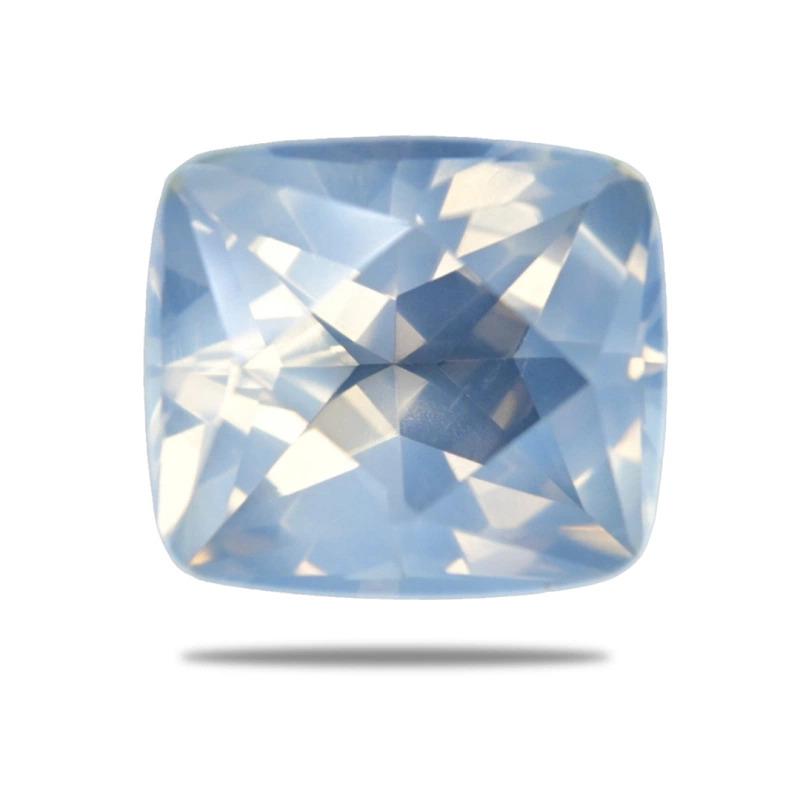
Geburtssteine für Juni: Perle, Alexandrit und Mondstein
Es gibt nur zwei Monate mit drei offiziellen Geburtssteinen, und der Juni ist einer davon! Welche drei Edelsteine sind für den Juni vorgesehen? Die offiziellen Geburtssteine für den Juni sind Mondstein, Perle und Alexandrit.
Im alten Rom hieß der Juni Junius oder Lunius , benannt nach der Göttin der Ehe, Juno, oder dem lateinischen iuniores, was „Jugend“ bedeutet.
Zu den antiken Festen im Juni gehörten die Rosalia (Rosenfest), Vestalia (zu Ehren der Herdgöttin Vesta und zur Reinigung Roms) und die Sommersonnenwende (erster Sommertag).
Die Sommersonnenwende wird auch heute noch gefeiert, ebenso wie moderne Juni-Feiertage wie der Vatertag, der LGBTQ+ Pride Month und der Internationale Kindertag.
Der Juni steht für Aufregung, Ausgeglichenheit und Erholung. Er wird auch mit der Ehe in Verbindung gebracht, da die Hochzeitssaison im Juni ihren Höhepunkt erreicht.
Diese Ideale spiegeln die drei Geburtssteine für Juni wider: Alexandrit, Perle und Mondstein. Heute besprechen wir ihre Geschichte, ihre Eigenschaften und ihren Reiz.
video: https://www.youtube.com/watch?v=v2PJNAbPgU8
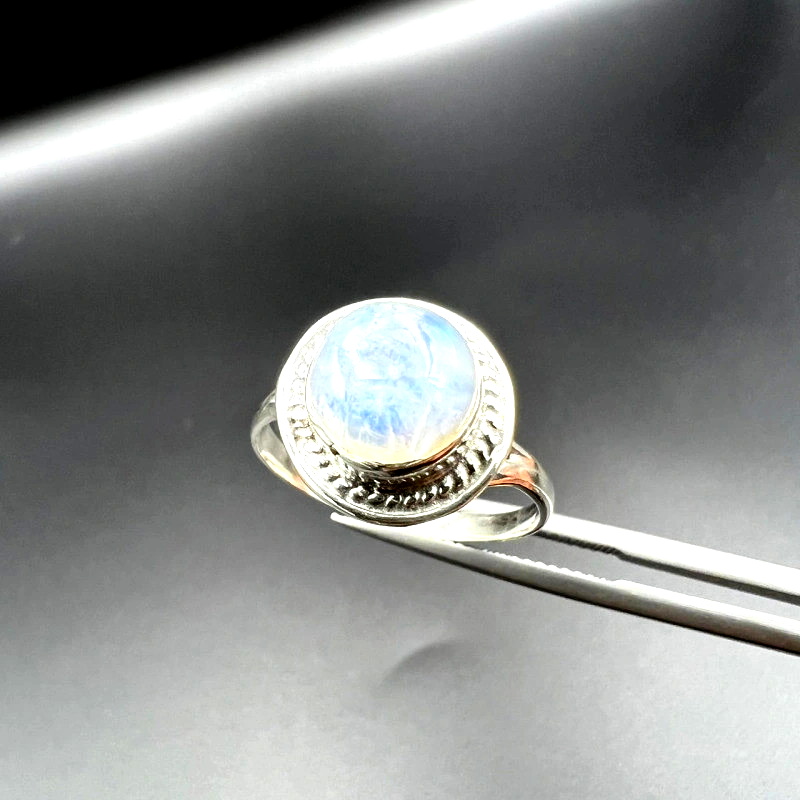 Abbildung oben: Mondsteinring
Abbildung oben: Mondsteinring
Historische und kulturelle Bedeutung der Geburtssteine für Juni
Sie fragen sich wahrscheinlich: Warum gibt es für den Juni drei Geburtssteine ? Nun, es waren nicht immer drei.
Veränderungen des Geburtssteins für Juni im Laufe der Zeit
In frühen Listen mit Geburtssteinen, die auf biblischen Texten basieren, wurden die Geburtssteine für Juni als Achat oder Smaragd interpretiert, heute sind es Geburtssteine für Mai .
Tiffany & Co. gab 1870 mit der Veröffentlichung einer Broschüre mit „Gedichten zu gregorianischen Geburtssteinen“ im Namen eines „unbekannten Autors“ den Anstoß zu formalisierten modernen Geburtssteinlisten. Im Juni stand die Perle im Vordergrund.
Die erste offizielle standardisierte Liste, die 1912 von der National Association of Jewellers (heute Jewellers of America) erstellt wurde, führte Perlen an erster Stelle auf, Mondsteine waren die Alternative. Diese Auflistung spiegelte sich auch in der britischen Liste der National Association of Goldsmiths von 1937 wider.
Der Jewelry Industry Council of America änderte die Liste von 1912 in den 1950er Jahren und fügte für Juni Alexandrit hinzu.
Warum hat sich der Geburtsstein für Juni geändert? Alexandrit war ein relativ neuer Edelstein, und eine Theorie besagt, dass Juweliere glaubten, Alexandrit sei häufiger als Perlen, was heute nicht mehr zutrifft.
Als nächstes schauen wir uns die individuelle Geschichte jedes Halbedelsteins an.
 Oben abgebildet: Goldener Haarschmuck aus dem 3. Jahrhundert aus der Antike, besetzt mit Perlen, Smaragden und Saphiren; ausgestellt im British Museum | Bildnachweis: Vassil, gemeinfrei
Oben abgebildet: Goldener Haarschmuck aus dem 3. Jahrhundert aus der Antike, besetzt mit Perlen, Smaragden und Saphiren; ausgestellt im British Museum | Bildnachweis: Vassil, gemeinfrei
Perlen in antiken Zivilisationen und der Mythologie
Die älteste schriftliche Erwähnung von Perlen stammt aus dem Jahr 2206 v. Chr., als Süßwasserperlen dem chinesischen Königshaus geschenkt wurden. Der älteste bekannte Perlenschmuck stammt aus der Zeit um 420 v. Chr. und ist die Halskette „Susa-Perlen“. Archäologische Funde deuten auch auf die prähistorische Verwendung von Perlmutt im Industal und auf Sri Lanka hin.
Die alten Griechen verbanden Perlen mit Erhabenheit und glaubten, die Geburtssteine seien aus den Tränen der Liebesgöttin Aphrodite entstanden, die der Mythologie zufolge ebenfalls aus dem Meer geboren wurde. Auch alte japanische Legenden behaupteten, Perlen entstünden aus den Tränen von Meerjungfrauen oder Nymphen.
Die alten Römer nannten Perlen „ Margaritae“ oder „Unio“ . Sie nutzten Perlen als Statussymbole und trugen sie nur den Reichen und Adligen.
Im alten Ägypten wurden Perlen mit Isis, der Göttin der Heilkunst, in Verbindung gebracht und in Gräbern beigesetzt. Eine berühmte Geschichte besagt, dass Kleopatra eine Wette mit Marcus Antonius gewann, indem sie einen ihrer Perlenohrringe in Essig einlegte und trank!
Einer hinduistischen Legende zufolge handelte es sich bei Perlen um Tautropfen, die vom Mond fielen. Ein weiterer hinduistischer Mythos über den Ursprung der Perle besagt, dass der Gott Krishna die erste Perle fand und sie seiner Tochter als Hochzeitsgeschenk schenkte, um sie vor dem Witwendasein zu bewahren und ihr eine erfolgreiche, lange Ehe zu ermöglichen.
Darüber hinaus geht man in vedischen Texten davon aus, dass die Perle aus dem Wasser der Erde und göttlicher Energie entstand und dann durch Blitze befruchtet wurde.
Im Islam beschreibt der Koran Perlen als Schmuck des Paradieses, als Früchte und Kronen, die denen gegeben werden, die in den Himmel kommen.
Andere Interpretationen der Bedeutung dieses Geburtssteins für Juni umfassten Schutz vor Feuer im alten China und die Darstellung der Reinheit in Europa.
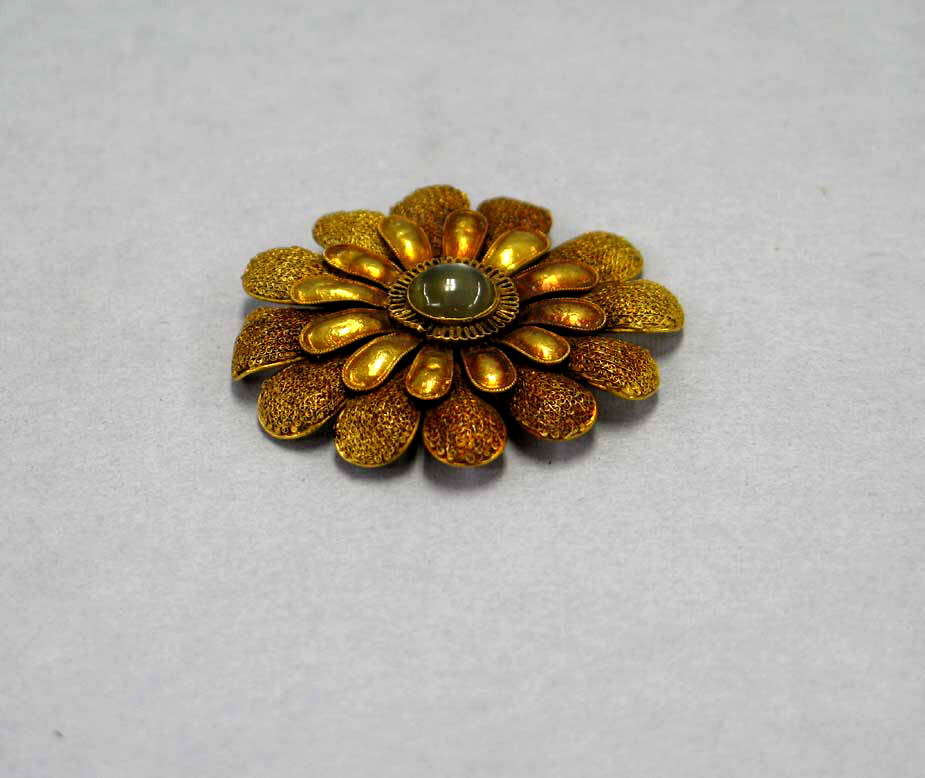 Oben abgebildet: Chinesisches Goldornament mit Mondsteinen, datiert 960–1279, Song-Dynastie; Ausgestellt im Metropolitan Museum of Art | Bildnachweis: Met Museum, gemeinfrei
Oben abgebildet: Chinesisches Goldornament mit Mondsteinen, datiert 960–1279, Song-Dynastie; Ausgestellt im Metropolitan Museum of Art | Bildnachweis: Met Museum, gemeinfrei
Geschichte des Mondsteins von der Antike bis zur Moderne
Der Name Mondstein ist von seiner Adulareszenz inspiriert, die von innen wie sanftes Mondlicht zu leuchten scheint.
Antike römische Legenden besagen, dass Mondstein entstand, als sich die Strahlen des Mondlichts verhärteten und von der Mondgöttin Diana geschenkt wurden. Sie blickten in den Stein, um Diana zu sehen und ihre Liebe und Weisheit zu empfangen.
Die alten Griechen nannten den Stein Aphroselene , ein Kofferwort aus Aphrodite und der Mondgöttin Selene. Sie brachten den Mondstein auch mit Hekate, der Göttin der Magie, und Artemis, der Göttin der Jagd und Keuschheit, in Verbindung.
Im alten Indien glaubte man, dass Mondsteine auf der Stirn der Mondgöttin Chandra (oder des Mondgottes Ganesh) je nach zunehmender oder abnehmender Mondphase glühten oder schwächer wurden.
Einem asiatischen Mythos zufolge werden alle 21 Jahre blaue Mondsteine an Land gespült. Die alten Ostasiaten hängten Mondsteine in Bäume, um reiche Ernten zu fördern, und glaubten, das wechselnde innere Licht des Edelsteins weise auf einen darin lebenden Geist hin.
Reisende nutzten Mondsteintalismane auch zum Schutz, was dem Geburtsstein für Juni den Spitznamen „Stein der Reisenden“ einbrachte.
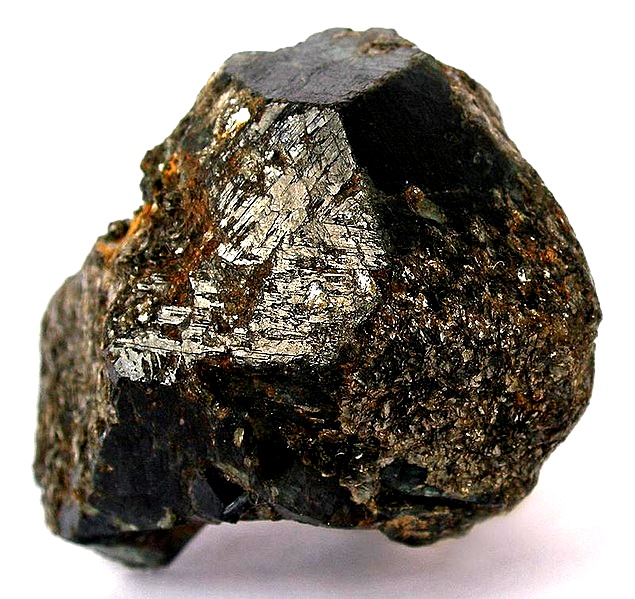 Oben abgebildet: Ein exzellentes, klassisches Referenzbeispiel für Alexandrit aus der Uralregion, Russland, mit kräftiger Form, etwas Kantenverschleiß, innerer Edelsteinhaftigkeit, zeigt aber dennoch Farbveränderungen; mit Etikett datiert auf 1850 | Bildnachweis: Rob Lavinsky, iRocks.co m – CC-BY-SA-3.0
Oben abgebildet: Ein exzellentes, klassisches Referenzbeispiel für Alexandrit aus der Uralregion, Russland, mit kräftiger Form, etwas Kantenverschleiß, innerer Edelsteinhaftigkeit, zeigt aber dennoch Farbveränderungen; mit Etikett datiert auf 1850 | Bildnachweis: Rob Lavinsky, iRocks.co m – CC-BY-SA-3.0
Alexandrits Reise von Russland in die Welt
Alexandrit ist der jüngste Geburtsstein für den Monat Juni. Der rot-grüne Edelstein mit seinen changierenden Farben wurde 1834 im russischen Uralgebirge entdeckt und nach Alexander II., dem zukünftigen Zaren, an seinem 16. Geburtstag benannt.
Die Geschichten darüber, wer den Alexandrit zuerst entdeckt und benannt hat, gehen auseinander. Entweder war es der finnische Mineraloge Nils Gustaf Nordenskiöld, der Leiter der Uralmine Wassiljewitsch Kokowin, der deutsche Mineralogieprofessor Gustav Rose oder der russische Mineraloge Graf LA Perowski. Unabhängig davon schenkte Graf LA Perowski Alexander II. den Edelstein zu seinem Geburtstag am 29. April.
Russland war die einzige Quelle, obwohl die dortigen Minen in den 1890er Jahren fast leer waren. Brasilien kam 1987 als weitere Quelle hinzu, gefolgt von Sri Lanka und Simbabwe.
Russischer Alexandrit wurde zu einem Symbol für Prestige und Nationalstolz und spiegelte zufällig die russischen Militärfarben wider. Alexander II. soll täglich einen Alexandritring als Talisman getragen haben.
Andere Kulturen interpretierten die Farbveränderungen des Geburtssteins im Juni als Anzeichen für Gefahr.
Geschichte? Geprüft. Jetzt schauen wir uns die Farben und einzigartigen Eigenschaften dieser Geburtssteine genauer an.
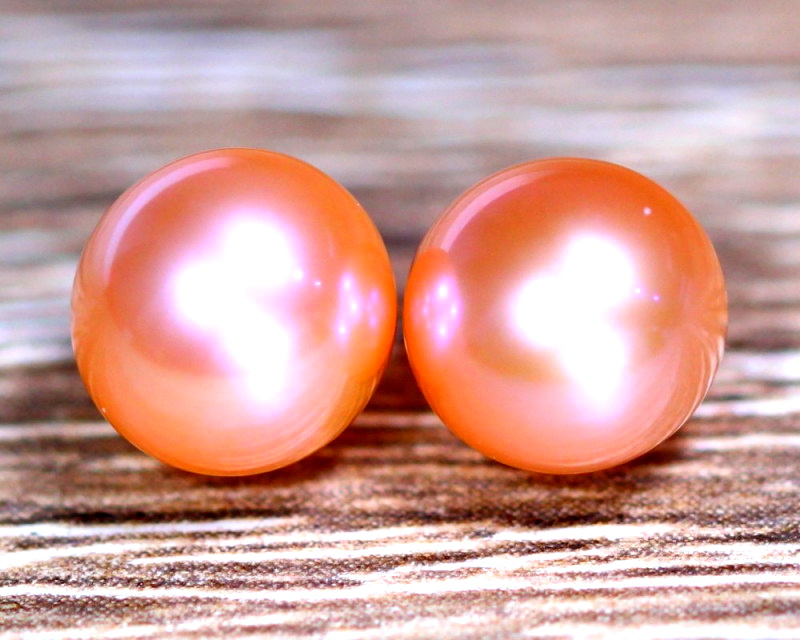 Oben abgebildet: Rosa Akoya-Perlen
Oben abgebildet: Rosa Akoya-Perlen
Perlen: Die Juwelen des Meeres
Perlen gelten als der „klassische“ Geburtsstein für den Monat Juni und sind unbestreitbar einzigartig. Sie sind Mineraloide (keine Mineralien) und einer der wenigen organischen Edelsteine , also Edelsteine, die von einem lebenden Organismus geschaffen wurden.
In diesem Fall entstehen Perlen im Inneren von Weichtieren, wenn ein Reizstoff wie Sand in die Schale des Tieres gelangt. Die Weichtiere scheiden Perlmuttschichten um den Reizstoff herum aus. Das Perlmutt besteht aus Kalziumkarbonat (Kalzit , Aragonit oder beidem). Die aufgehäuften Perlmuttschichten erzeugen den charakteristischen „Perlglanz“.
Die Seltenheit dieses Geburtssteins für Juni ist ausschließlich auf Naturperlen zurückzuführen, die in freier Wildbahn ohne menschliches Zutun wachsen. Die meisten Perlen sind heute Zuchtperlen , die auf die gleiche Weise wachsen, deren Reizstoffe jedoch von Menschenhand auf Perlenfarmen hinzugefügt werden.
Naturperlen sind typischerweise klein und unregelmäßig geformt, während Zuchtperlen oft rund oder nahezu rund sind. Sie können die Herkunft Ihrer Perle jederzeit überprüfen, indem Sie sie an ein Labor wie das GIA schicken.
Perlenarten und -wert
Einige der beliebtesten Perlenarten sind:
Akoya : Erste und normalerweise hochwertigste Zuchtperle; Langsamerer Aufbau der Perlmuttschicht, was besseren Glanz und rundere Form bedeutet; Oft gebleicht und weiß gefärbt mit rosa Obertönen
Süßwasser : Von Süßwassermollusken gebildet, normalerweise gezüchtet; typischerweise dickeres Perlmutt, unregelmäßigere Form und geringerer Glanz, aber ausgefallenere Farben als Salzwasserperlen
Salzwasser : Von Salzwassermollusken gebildet, normalerweise gezüchtet; Historischer Standard für schöne Perlen
Südsee : Gezüchtet aus Salzwasseraustern mit Silber- oder Goldlippigkeit; dicker Perlmutt und größer als Akoya-Austern; normalerweise weiß, cremefarben oder golden
Tahiti : Gezüchtet aus schwarzlippigen Salzwasseraustern, hauptsächlich in Französisch-Polynesien; nur natürlich schwarze Perlen, aber oft dunkelgrün oder grau; können weiß, blau, silber, violett oder gelb sein; zeigen einen Schillereffekt, der „Orient“ genannt wird
Der größte Wertfaktor ist natürlich vs. gezüchtet – natürliche Perlen als Geburtssteine für Juni sind deutlich teurer.
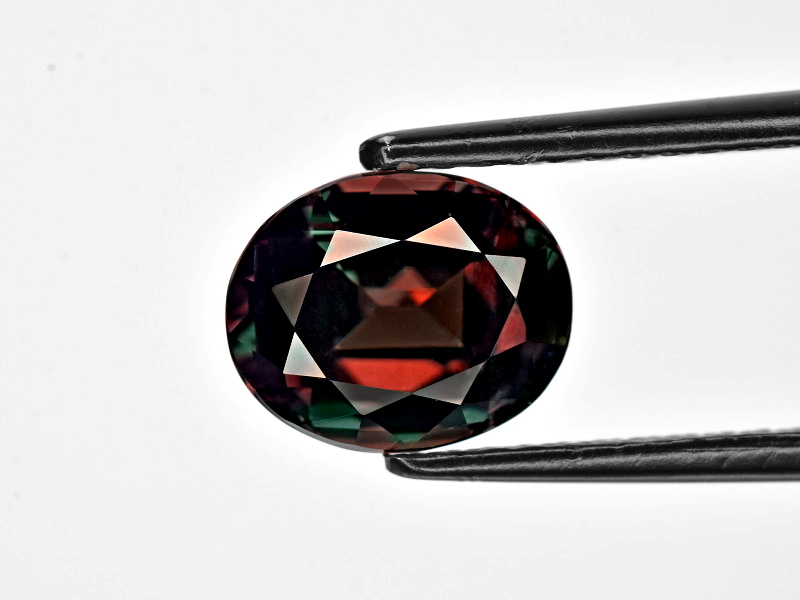
Alexandrit: Der Chamäleon-Edelstein
Alexandrit ist eine Chrysoberyll- Variante, bei der ein Teil des Aluminiums durch Chrom ersetzt ist. Er ist bekannt für seine Farbveränderungen, die durch diese Chromverunreinigungen verursacht werden.
Welche Farbe hat dieser Geburtsstein für Juni? Die schönsten Alexandrite sind bei Tageslicht smaragdgrün und im Glühlicht rötlich-violett, was ihnen den Spitznamen „Smaragd bei Tag, Rubin bei Nacht“ einbrachte. Die meisten dieser Steine stammen aus Russland.
Andere Farbveränderungen reichen von Gelb oder Pfirsich zu Pink oder von Blaugrün zu Magenta. Sri-Lanka-Alexandrit ist oft olivgrün, während brasilianischer Alexandrit oft blasser ist.
Der Wert von Alexandrit hängt hauptsächlich von seiner Reinheit, seinem Grad und seinem Ausmaß der Farbveränderung ab.
Katzenaugen- Alexandrite sind besonders selten und wertvoll.
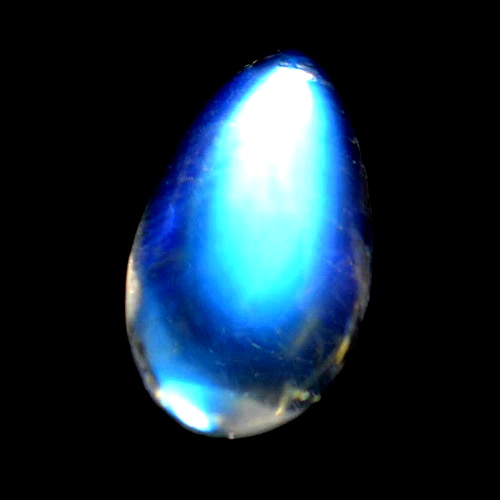
Mondstein: Leuchtende Schönheit und Farben
Von den drei Geburtssteinen für Juni ist der Mondstein am zugänglichsten, aber nicht weniger atemberaubend.
Mondstein besteht aus abwechselnden dünnen Schichten aus den Feldspaten Albit und Oligoklas bzw. Orthoklas . Wenn Licht in diese Schichten eindringt, entsteht das für Mondstein typische schwebende, innere Leuchten, die sogenannte Adulareszenz.
Die besten Mondsteine sind farblos und haben eine rein blaue Adulareszenz. Die Farbe des Geburtssteins für Juni umfasst aber auch Schattierungen wie Pfirsich, Grün und Orange.
Die meisten Mondsteine werden als Cabochons geschliffen. Facettenschliffe können jedoch Fehler verbergen und das Funkeln verstärken. Weitere Mondsteinschliffe sind Perlen und Schnitzereien.
Damit sind Mineralogie und Aussehen abgedeckt. Es ist also an der Zeit, die Geburtssteine für Juni und ihre Bedeutung zu untersuchen.
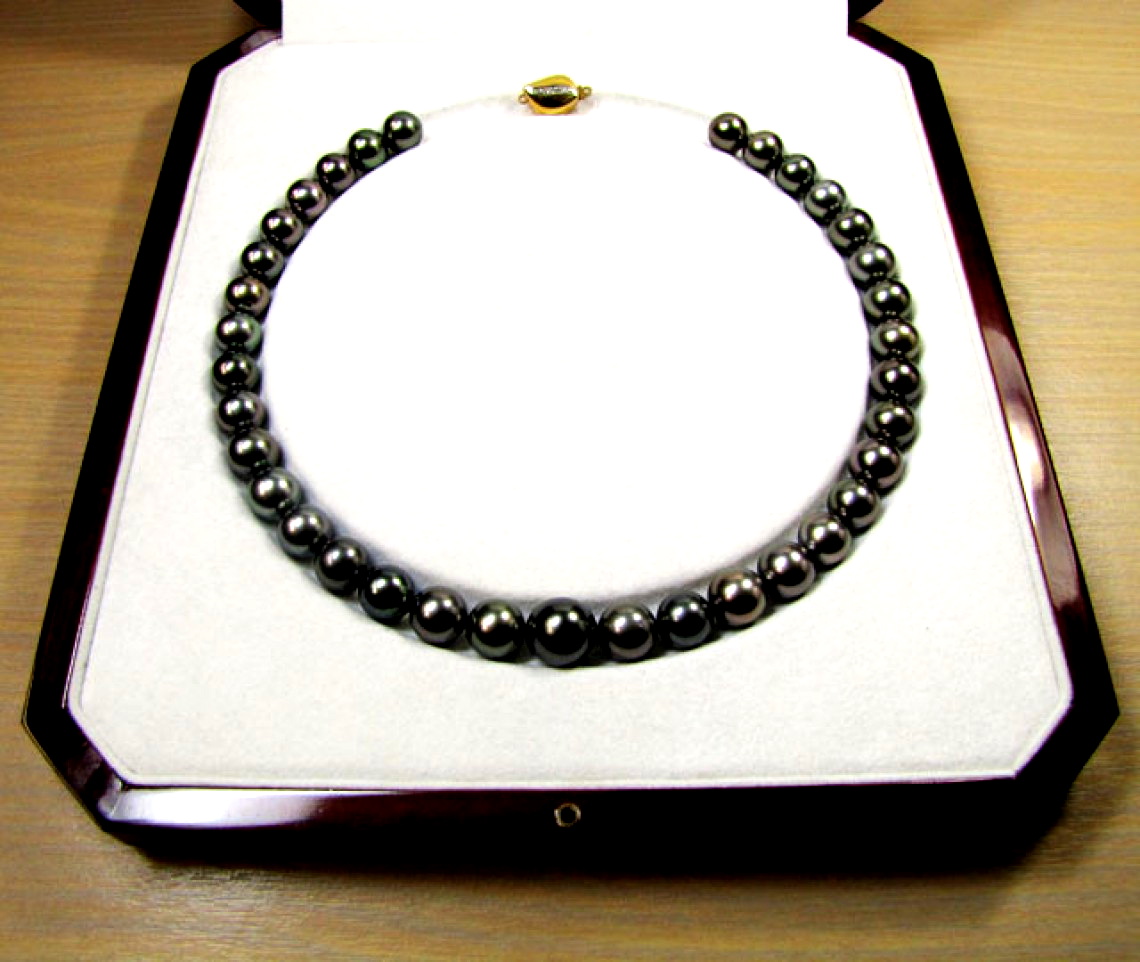 Abbildung oben: Tahiti-Perlenkette
Abbildung oben: Tahiti-Perlenkette
Perlen: Symbolik und Bedeutung
Im Laufe der Geschichte wurden Perlen mit Weiblichkeit, Weisheit und Transformation in Verbindung gebracht.
Weiblichkeit
Das ätherische Aussehen und der aquatische Ursprung der Perle wecken Assoziationen mit dem Mond, der Weiblichkeit und dem Wasser. Mond und Gezeiten sind mit traditionell weiblichen Idealen verbunden, die eigenen wechselnden Emotionen zu erschließen.
Die Mondseite von Perlen soll die Intuition stärken und mit spirituellen Welten verbinden. Darüber hinaus werden Perlenheilsteine traditionell bei Fruchtbarkeit, Hormonstörungen und Geburtshilfe eingesetzt.
Weisheit
Die Verbindung zwischen Perlen und Wissen wird durch die Redewendungen „Perlen der Weisheit“ veranschaulicht, die weise Ratschläge bedeuten, oder „Man soll keine Perlen vor die Säue werfen“, was bedeutet, dass man etwas Wertvolles klugerweise nicht denen anbietet, die es nicht zu schätzen wissen.
In der Bibel symbolisieren Perlen meist Weisheit. In hinduistischen, taoistischen und buddhistischen Philosophien werden „flammende Perlen“ als Symbol spiritueller Weisheit erwähnt. Manche Menschen der Antike glaubten, Perlen enthielten Lebensweisheiten und führten die Toten durch das Jenseits.
Die „Verborgenheit“ und Form des Geburtssteins für Juni stehen auch für die durch Erfahrung gewonnene Weisheit.
Transformation
Perlen brauchen Jahre, um zu entstehen. Sie entstehen meist aus einem Sandkorn und entwickeln sich zu wunderschönen Edelsteinen. Es überrascht nicht, dass diese Geburtssteine für Juni für Transformation stehen.
Zitat der Motivationsrednerin Susan C. Young: „Die Auster hat das, was zunächst eine Irritation und Störung war, genutzt, um ihren Wert zu steigern.“
Im alten Asien galten Perlen als Symbol für die Reise der Seele zur Vollkommenheit. Tarotkartenleser verbinden die Perle mit der Reise des Narren als Weg der Selbstfindung.
 Abbildung oben: Alexandritring mit Akzentdiamanten | Bildnachweis: Christina Rutz, Flickr , CC-BY-SA-2.0
Abbildung oben: Alexandritring mit Akzentdiamanten | Bildnachweis: Christina Rutz, Flickr , CC-BY-SA-2.0
Die Mystik und metaphysischen Eigenschaften des Alexandrits
Über Alexandrit gibt es nicht so viele Überlieferungen, aber er hat dennoch an Bedeutung gewonnen.
Wie die Perle symbolisiert der Alexandrit Transformation . Dem Junistein wird eine verjüngende Wirkung nachgesagt, die dabei hilft, die Veränderungen des Lebens anzunehmen.
Der farbwechselnde Stein steht auch für Ausgeglichenheit , sei es emotionale Ausgeglichenheit, körperliche und geistige Ausgeglichenheit oder einfach dafür, geerdet zu bleiben.
Weitere Assoziationen mit Alexandrit sind Glück, Erfolg und Kreativität.

Bedeutungen und Kräfte des Mondsteins
Mondstein hat die gleichen metaphysischen Eigenschaften wie Perlen und ist mit Weiblichkeit, Weisheit und dem Mond verbunden.
Historisch betrachtet nutzten Magier Mondsteine strategisch für Zaubersprüche, die auf der aktuellen Mondphase basierten. Viele Mystiker nutzen Mondsteine als Fokussierungshilfe bei der Meditation. Kristallheiler empfehlen Mondsteine zur Behandlung von Schlaflosigkeit.
Mondstein ist auch ein Zeichen für Liebe und Ehe.
Eine indische Tradition besteht darin, dass Paare bei Vollmond den Geburtsstein des Monats Juni in den Mund nehmen, um ihre Zukunft vorherzusagen . Sowohl die alten Griechen als auch die Inder glaubten, dass Mondsteine die Voraussicht erleichtern.
Für diejenigen ohne Partner besagt eine Legende, dass man seine wahre Liebe anziehen kann, indem man bei Vollmond mit einem Mondstein die Absicht äußert und ihn bis zum nächsten Vollmond bei sich trägt.
Feiern Sie die Momente des Lebens mit den Geburtssteinen für Juni
Sie fragen sich, welcher der beliebteste Geburtsstein für Juni ist?
Für die meisten Schmuckstücke sind Perlen die Königin. Alexandrit wird jedoch häufiger für Ringe mit dem Geburtsstein Juni verwendet, und Mondstein ist am weitesten verbreitet.
Was ist astrologisch gesehen der Geburtsstein für Juni und Zwillinge? Alexandrit ist der beste Geburtsstein für im Juni geborene Zwillinge und erfüllt ihr Verlangen nach Ausgeglichenheit.
Für im Juni geborene Krebse passen Mondstein und Perle perfekt zum herrschenden Planetenkörper des Krebses (dem Mond) und verstärken die natürliche Intuition des Zeichens.
Das Verschenken eines Geburtssteins für Juni ist eine bedeutungsvolle Geste zur Feier eines geliebten Menschen.
Die Auswahl reicht von Schmuck mit dem Geburtsstein für Juni über mit Geburtssteinen besetzte Rosendekorationen (die Juniblume) bis hin zu einem Gemälde des Lieblingskristalls des Beschenkten für Juni.
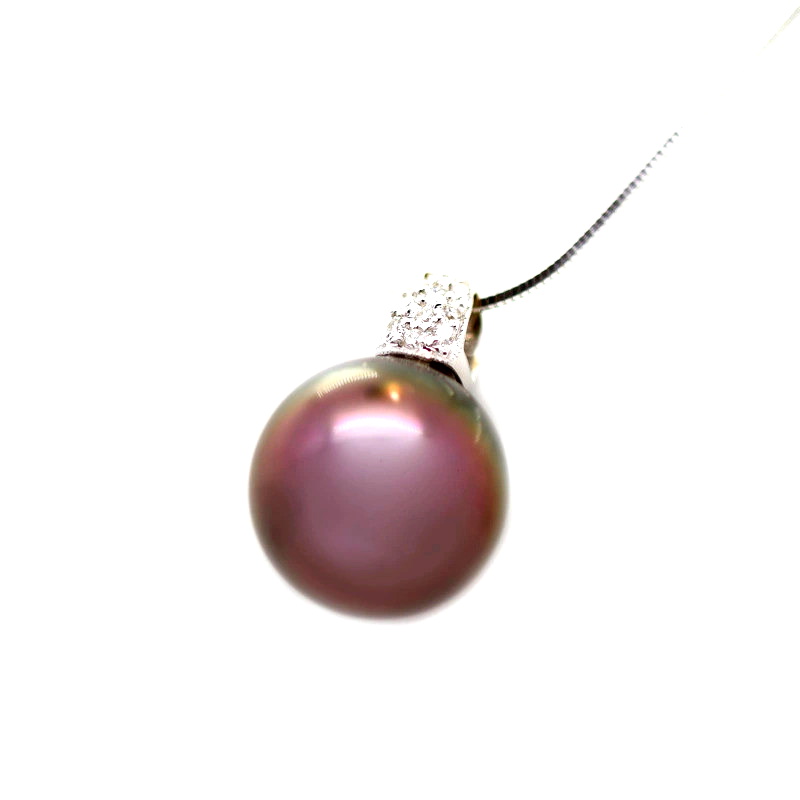 Abbildung oben: Salzwasser-Zuchtperlenkette
Abbildung oben: Salzwasser-Zuchtperlenkette
Welches Juni-Juwel ist Ihr Favorit?
Der Juni steht für Liebe, Aufregung und Ausgeglichenheit, verkörpert durch Alexandrit, Mondstein und Perle. Jeder dieser Edelsteine hat seinen eigenen Reiz. Dank ihrer unterschiedlichen Erscheinungsformen und Preise gibt es für jedes Budget den passenden Geburtsstein für den Juni!
Suche nach Gemstone Encyclopedia
Verwandte Auktionen
In Verbindung stehende Artikel
Russland ist ein riesiges Land mit unermesslichen Mineral- und Edelsteinreserven. Russland hat sich zu einem bedeutenden Diamantenproduzenten und -produzenten entwickelt.
9th May 2018
Werfen wir einen Blick auf die 10 größten Diamanten, die je gefunden wurden. Sie werden nie erraten, wie groß der Diamant ist, der den ersten Platz belegt.
9th May 2018
Asien ist eine Region der Erde, die einige der außergewöhnlichsten Edelsteine hervorbringt. Rubin, Saphir und Spinell stammen alle aus dieser Region.
9th May 2018
Neue Artikel
Chrysanthemenblütensteine sind Naturwunder mit einem weißen Kalzit-, Celestin- oder Andalusit-Blumenmuster, das sich vom schwarzen Kalkstein oder Tonstein abhebt.
13th Jan 2026
Der Regenbogen-Gitter-Sonnenstein ist eine Feldspatvarietät mit drei wunderschönen optischen Effekten, die durch verschiedene Einschlüsse hervorgerufen werden. Sein feuriges Farbenspiel und das Gittermuster machen ihn zu einem seltenen Sammlerstück!
12th Jan 2026
Thulit ist ein seltener norwegischer Edelstein aus der Zoisit-Mineralfamilie, der einen leuchtend rosafarbenen Farbton aufweist und häufig für Schmuckfassungen und Anhänger verwendet wird.
6th Jan 2026
Artikelkategorien
How To's is where you will find helpful articles from gem Rock Auctions on how to cut gemstones, select gemstones and buy gemstones.
9 Artikel



